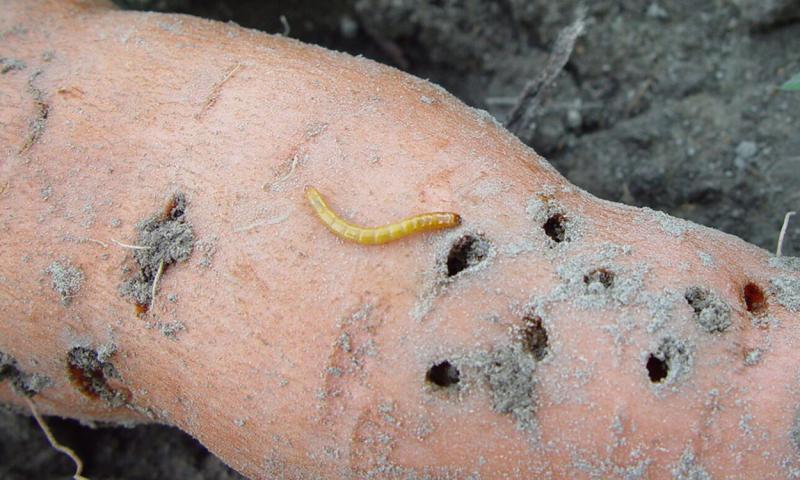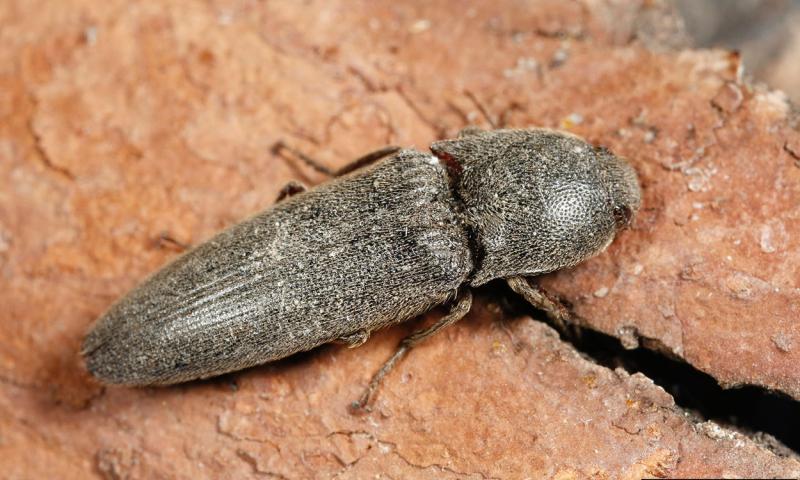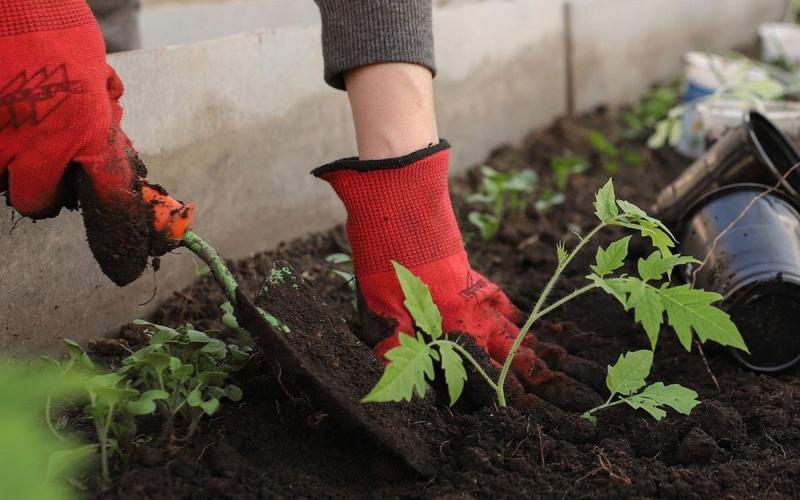
Originally Submitted: May 26, 2021
With warming soil temperatures, overwintering wireworms have become active throughout South Dakota. These insects are now being noticed more frequently as people prepare their gardens for planting. Wireworms are soil-dwelling insects that can be pests of germinating seeds, seedlings and root crops (Figure 1). Wireworms are long-lived and can persist in the soil for multiple years, causing prolonged injury to garden produce.
Identification and Lifecycle
Wireworms are the larvae of click beetles, which are commonly observed throughout the summer (Figure 2). Click beetles get their name because, if they are placed on their back, they will right themselves and make an audible clicking noise in the process.

The larvae (i.e., wireworms) have a slender, jointed body with three pairs of legs. There are many different species of wireworms, and they can vary dramatically in both size and color. In general, wireworms vary from yellow-to-brown in color and can be between ½ to 1 ½ inches long.
Wireworms can overwinter as either their larval form or as adult click beetles. Click beetles will lay eggs in the soil after they emerge in the spring. Once the wireworms hatch, they will feed on seeds and the roots of plants each growing season until they reach maturity. As previously mentioned, wireworms have a multi-year life span, so multiple generations can occur within the soil.
Injury
Early in the season, wireworms will feed on seeds and the roots of seedlings. Large populations of wireworms can result in reduced germination rates and dead or wilted plants. Later in the season, the main concern with wireworms becomes feeding injury on root crops, such as carrots, potatoes and beets. Feeding can vary from small holes and blemishes to deep and extensive tunneling. Severe damage makes produce look unappetizing and may cause spoiling.
Management
Although insecticides aren't an effective option for managing wireworms in a garden, there are a variety of alternative methods. Wireworms like damp soils, so make sure that your garden has proper drainage to help prevent infestations. Avoid planting host plants in recently converted sod, as wireworms are often abundant in these areas.
Crop rotation can be a good management tool in areas that are already infested with wireworms. Planting non-host crops, like onions, cucurbits and brassicas can starve or deter wireworms and reduce their populations. Furthermore, tilling infested soil in the fall can help eliminate wireworms by exposing them to birds and other predators. Using a trap-and-kill method is also an option. This involves lightly burying carrots or potatoes in infested areas and digging them up every few days to destroy any wireworms that are present.


